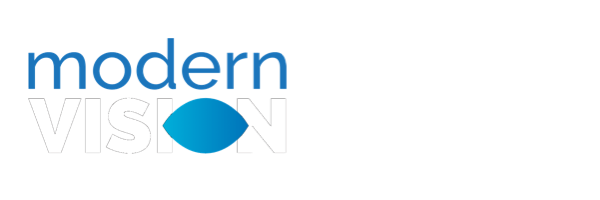Can I get Refractive Lens Exchange if I’ve had LASIK?
Published by on August 14, 2025
 If you’ve previously had LASIK and are now noticing changes in your vision, you might be wondering if Refractive Lens Exchange (RLE) is still an option. Many people experience vision changes as they age, especially related to presbyopia or cataracts. At Kugler Vision, we regularly work with patients who have had LASIK and are now exploring advanced vision correction options like RLE. This article will explain how prior LASIK affects your eligibility and what you need to know moving forward. To find out if Refractive Lens Exchange is right for you, schedule a consultation with the team at Kugler Vision.
If you’ve previously had LASIK and are now noticing changes in your vision, you might be wondering if Refractive Lens Exchange (RLE) is still an option. Many people experience vision changes as they age, especially related to presbyopia or cataracts. At Kugler Vision, we regularly work with patients who have had LASIK and are now exploring advanced vision correction options like RLE. This article will explain how prior LASIK affects your eligibility and what you need to know moving forward. To find out if Refractive Lens Exchange is right for you, schedule a consultation with the team at Kugler Vision.
Can I Get Refractive Lens Exchange if I’ve Had LASIK?
Yes, you can get Refractive Lens Exchange (RLE) even if you’ve previously had LASIK. Many people who had LASIK in their younger years are now noticing age-related vision changes like presbyopia or early cataracts. At Kugler Vision, it’s common for us to see patients in this exact situation, and RLE can be a great option. Because RLE replaces the natural lens entirely, it can correct refractive errors that LASIK no longer addresses. If you’re experiencing new vision problems after LASIK, RLE may be the right solution—Kugler Vision can help determine if you’re a good candidate.
Is it safe to get RLE after having LASIK?
RLE is considered safe after LASIK when performed by an experienced surgeon, and Kugler Vision has extensive experience working with post-LASIK patients. Before any eye surgery, our team conducts thorough pre-operative testing, including corneal topography, to assess the shape and stability of the cornea. We also review your LASIK history and look at your overall eye health, including the human eye’s healing status, to ensure the procedure can be done safely and successfully. This detailed process helps minimize complications and improve your results.
What is the difference between LASIK and Refractive Lens Exchange?
LASIK is a laser-based refractive surgery that reshapes the cornea to correct common vision problems like myopia, hyperopia, and astigmatism. In contrast, Refractive Lens Exchange involves removing your eye’s natural lens and replacing it with an intraocular lens implant. This approach is nearly identical to cataract surgery but done before a cataract forms. At Kugler Vision, we evaluate whether a patient’s visual perception issues are best corrected through corneal reshaping or lens replacement, depending on their age and eye health.
How long should I wait after LASIK before considering RLE?
Most surgeons, including those at Kugler Vision, recommend waiting at least six months to one year after LASIK before considering RLE. This time allows for full healing and vision stabilization, which are essential for accurate intraocular lens power calculations. Since LASIK changes the cornea’s shape, your surgeon needs to ensure those changes are stable before performing another procedure. Waiting also reduces the risk of inaccurate refraction or suboptimal lens selection.
How does previous LASIK affect intraocular lens selection?
Previous LASIK surgery can make it more challenging to select and calculate the correct intraocular lens for RLE. The laser used during LASIK alters the cornea’s shape, which affects the way light is focused through the eye and complicates the formulas typically used in lens calculations. At Kugler Vision, we use advanced technology and sometimes pre-LASIK data to refine the process and reduce the risk of postoperative refractive error. Certain premium lens types, such as multifocal or extended depth of focus IOLs, may require extra care to avoid issues like glare or reduced contrast.
What types of intraocular lenses are used after LASIK?
At Kugler Vision, several types of intraocular lenses (IOLs) can be used after LASIK, each with specific advantages depending on your vision goals and eye health:
- Light Adjustable Lens (LAL): Allows post-surgical vision fine-tuning using UV light for highly customized results.
- Multifocal IOLs: Improve vision at multiple distances to reduce or eliminate dependence on reading glasses.
- Extended Depth of Focus (EDOF) IOLs: Provide a continuous range of vision with reduced glare and halos.
- Accommodating IOLs: Flex with the eye’s natural movement to enhance near and distance vision.
- Toric IOLs: Correct astigmatism for clearer vision.
- Monofocal / Aspheric IOLs: Offer sharp distance vision and improved clarity in low-light conditions.
Your Kugler Vision surgeon will recommend the best lens option based on your prior LASIK, current eye shape, and lifestyle needs.
What makes someone a good candidate for RLE after LASIK?
You may be a good candidate for RLE after LASIK if you are over 50, have stable vision, and are experiencing presbyopia or early cataracts. RLE is especially helpful for patients with farsightedness or near-sightedness that is no longer correctable with laser procedures. At Kugler Vision, we also evaluate whether a patient wants to reduce their reliance on glasses or contact lens use and whether they’re looking for a long-term option like clear lens extraction that also prevents future cataracts.
What should I expect from the RLE procedure after LASIK?
The RLE procedure is typically quick and performed under local anesthesia. At Kugler Vision, our team ensures you’re comfortable and informed every step of the way. We use precise measurements and advanced surgical planning to improve your chances of excellent vision after the implant. Patients often experience improved distance and near vision without corrective lens use. However, results depend on multiple factors, including your ocular health, previous LASIK treatment, and chosen lens type.
Does RLE eliminate the need for cataract surgery later?
Yes, RLE eliminates the risk of developing cataracts in the future because the natural lens—where cataracts form—is removed. This makes RLE both a refractive and preventative procedure. Many Kugler Vision patients choose RLE to correct presbyopia or high refractive error while also avoiding cataract surgery later in life. If you’ve already had LASIK and are now facing age-related vision problems, this dual benefit is often a major advantage.
How is the lens power calculated after LASIK?
Calculating lens power after LASIK requires special formulas and a deep understanding of altered corneal curvature. Kugler Vision uses advanced diagnostic tools and considers your pre- and post-LASIK measurements to reduce the risk of lens selection errors. This personalized approach allows us to minimize unexpected outcomes and increase patient satisfaction. Bringing your original LASIK records can also help refine calculations and improve your final visual result.
What makes Kugler Vision the right place for RLE after LASIK?
Kugler Vision specializes in advanced refractive surgery and regularly helps post-LASIK patients explore new options. Our team brings decades of ophthalmology and optometry expertise, paired with state-of-the-art technology, to ensure that every step—from evaluation to implant selection to healing—is handled with care. We take extra time to manage patient expectations and focus on your long-term visual goals. If you’re considering RLE after LASIK, our expert team will walk you through each part of the process and tailor your treatment to your unique needs.
Ready for Your Next Step Toward Clear Vision?
If you’ve had LASIK and are wondering whether RLE is the right option now, Kugler Vision can help you make an informed decision. Schedule a personalized consultation today and find out how this next step in vision correction can support your goals.

Lance Kugler, MD, is a specialist in LASIK and vision correction surgery and CEO of Kugler Vision. A proud Omaha native, he is passionate about improving lives through clear vision. Dr. Kugler serves on several national boards, and his practice is recognized internationally as a center of excellence. Dr. Kugler is one of the original founders of the Refractive Surgery Alliance, an international organization comprised of over 350 of the world’s leading vision correction surgeons; he also served as its first president. In 2019, Dr. Kugler was selected as a TEDx speaker, and delivered a talk in Omaha about the worldwide epidemic of nearsightedness and refractive solutions. Dr. Kugler is an Associate Professor of Refractive Surgery at the University of Nebraska Medical Center’s Truhlsen Eye Institute, has been published in many medical journals, and participates in numerous clinical studies to advance the field of vision correction surgery. Additionally, Dr. Kugler is proud to be a Board Certified Fellow of the World College of Refractive Surgery & Visual Sciences. Dr. Kugler and his wife are proud parents to five active kids. When he has a spare moment, he enjoys skiing, tennis, travel, and fine coffee.




Leave a Reply